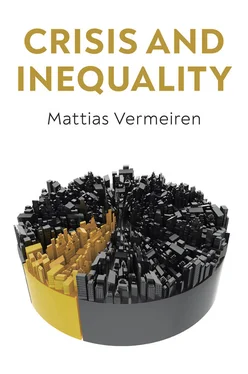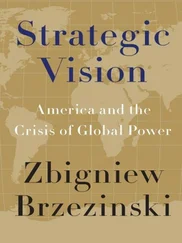248 225
249 226
250 227
251 228
252 229
253 230
254 231
255 246
256 247
257 248
258 249
259 250
260 251
261 252
262 253
263 254
264 255
265 256
266 257
267 258
268 259
269 260
270 261
271 262
272 263
273 264
274 265
275 266
276 267
277 268
278 269
279 270
280 271
281 272
282 273
283 274
284 275
285 276
286 277
287 278
288 279
289 280
290 281
291 282
292 283
293 284
294 285
295 286
296 287
297 288
298 289
299 290
300 291
301 292
302 293
For Saul
Crisis and Inequality
The Political Economy of Advanced Capitalism
Mattias Vermeiren
polity
Copyright © Mattias Vermeiren 2021
The right of Mattias Vermeiren to be identified as Author of this Work has been asserted in accordance with the UK Copyright, Designs and Patents Act 1988.
First published in 2021 by Polity Press
Polity Press
65 Bridge Street
Cambridge CB2 1UR, UK
Polity Press
101 Station Landing
Suite 300
Medford, MA 02155, USA
All rights reserved. Except for the quotation of short passages for the purpose of criticism and review, no part of this publication may be reproduced, stored in a retrieval system or transmitted, in any form or by any means, electronic, mechanical, photocopying, recording or otherwise, without the prior permission of the publisher.
ISBN-13: 978-1-5095-3768-6
ISBN-13: 978-1-5095-3769-3 (pb)
A catalogue record for this book is available from the British Library.
by Fakenham Prepress Solutions, Fakenham, Norfolk, NR21 8NL
The publisher has used its best endeavours to ensure that the URLs for external websites referred to in this book are correct and active at the time of going to press. However, the publisher has no responsibility for the websites and can make no guarantee that a site will remain live or that the content is or will remain appropriate.
Every effort has been made to trace all copyright holders, but if any have been overlooked the publisher will be pleased to include any necessary credits in any subsequent reprint or edition.
For further information on Polity, visit our website: politybooks.com
Figures, Tables and Boxes
All figures and tables were created by the author for the book. Credit lines refer to the source of the underlying data.
1.1The Lorenz curve and the Gini index
1.2Gini indices of selected OECD countries, 1985 and 2017
1.3Share of the top percentile in total income in Anglo-Saxon countries, 1920–2014
1.4Share of the top percentile in total income in continental Europe and Japan, 1920–2014
1.5Average labour income share, 1970s and 2000s
1.6The productivity–pay gap in the US economy, 1948–2014
1.7Wealth shares of top 10 per cent in Europe and the United States, 1810–2010
1.8The market price mechanism
1.9Skill-biased technological change and the price mechanism in labour markets
1.10Average annual contribution of private consumption and net exports to GDP growth, 1985–2007
2.1Index of capital mobility and percentage of countries in a banking crisis, 1800–2010
2.2Fordist wage-led growth cycle
2.3Unemployment and productivity growth in the United States, 1914–2015
2.4Average replacement rates for pensions and unemployment and sickness benefit, 1930–2005
2.5 Statutory corporate income tax rate in selected OECD countries, 2000–20
3.1 Ownership structure of government debt in twelve OECD countries, 1900–2011
3.2 Unemployment and inflation rates in advanced economies, 1960–2015
3.3 Public debt in selected regions and countries (in percentage of GDP), 1950–2011
3.4 Net government debt interest payments (in percentage of GDP), 1960–2019
3.5 Negative demand shock in a sovereign bond market
3.6 Long-term nominal interest rates, 1960–2019
3.7 Capital share of GDP, 1970–2012
4.1 Hourly compensation costs (in US dollars): manufacturing sector, 2016
4.2 Average per hour worked (in current PPP dollars) 2000–18
4.3 Change in employment shares of low-, middle- and high-skill jobs (in percentage points), 1995–2016
4.4 Union density and income equality in selected OECD countries, 1980–2010
4.5 Bargaining coverage in percentage of employees, 1980 and 2016
4.6 Trade union density in percentage of total labour force, 1980 and 2016
4.7 Fall in labour share in total economy and manufacturing in the CMEs (in percentage points), 1980–2010
5.1 Profit distribution in Apple iPhone’s global value chain
5.2 Employment protection and stock market capitalization
5.3 Widening productivity gap between global frontier firms and other firms, 2001–13
5.4 Stock market capitalization of publicly listed firms (in percentage of GDP), 1975–2017
6.1 Balance sheet of a traditional bank: an illustration
6.2 Share of net interest income in bank profits, 1980–2009
6.3 Bank assets (in percentage of GDP), 1990 and 2007
6.4 Balance sheet of a market-based bank: an illustration
6.5 Total MEWs in the US economy (in billion US dollars), 1991–2006
6.6 Net private real wealth per adult in advanced countries, 1870–2014
6.7 Increase in household debt and house prices in selected countries (in percentage), 1995–2008
7.1 Global current account imbalances (in billion US dollars), 1997–2019
7.2 Current account balance in percentage of GDP, 1990–2019
7.3 Current account balance of Eurozone countries (in percentage of GDP), 2007
7.4 Share of value added of FIRE sector in GDP, 1995–2018
7.5 Evolution in economy-wide nominal ULC (1995 = 100), 1995–2019
7.6 Current account balance of selected EMU countries (in billion US dollars), 1997–2019
7.7 Cross-country falls in consumption and pre-crisis debt levels
7.8 Distribution of net housing wealth in the United States, 2000–19
7.9 Distribution of financial wealth in the United States, 2009 and 2019
7.10 Interest rates on ten-year sovereign bonds of selected Eurozone countries, 1995–2018
7.11 Core inflation rates in the Eurozone, January 2007–December 2019
7.12 Five-year moving average of GDP growth in the United States, Eurozone and United Kingdom, 1965–2018
8.1 Top 1 per cent vs bottom 50 per cent national income shares: United States vs Western Europe, 1980–2016
8.2 Labour income share: CMEs, MMEs vs LMEs, 1970–2012
8.3 Mean vote share of right-wing and left-wing populist parties, 1980–2020
8.4 Greenhouse gas emissions (in gigatonnes), 1960–2018
8.5 Fiscal support measures during the coronavirus crisis (in percentage of GDP), mid-April 2020
1.1Total income growth and inequality, 1980–2016
1.2Distribution of net wealth in the OECD world, 2015 or latest available year
2.1Union membership as a percentage of non-agricultural workers, pre-World War I to 1975
2.2Left percentage of valid votes, pre-World War I to 1980
2.3 Indicators of growth models, 1995–2007, and income inequality, 1980–2007
3.1 How inflation influences the tax treatment of interest income
3.2 Real rentier fraction of national income, selected countries, 1970s–1990s
3.3 Keynesian and neoliberal macroeconomic regimes compared
Читать дальше











